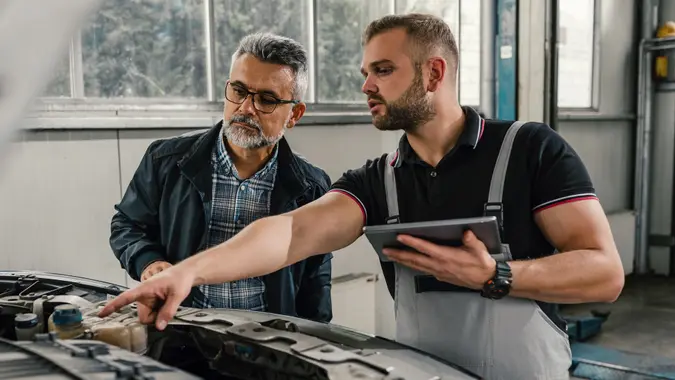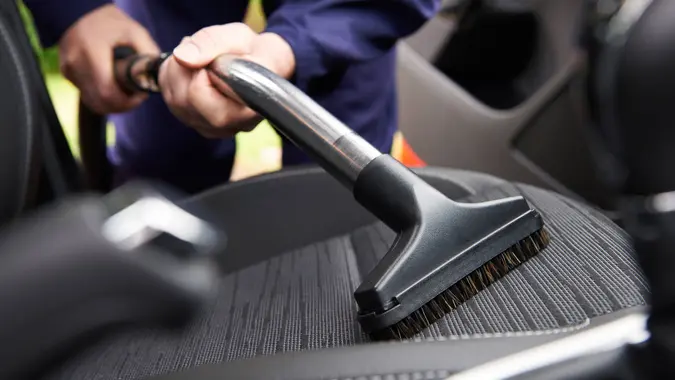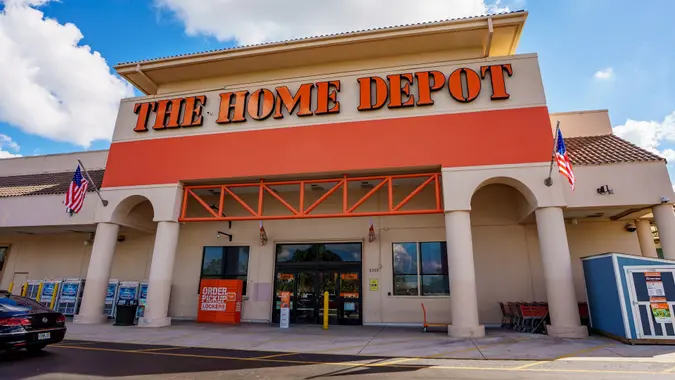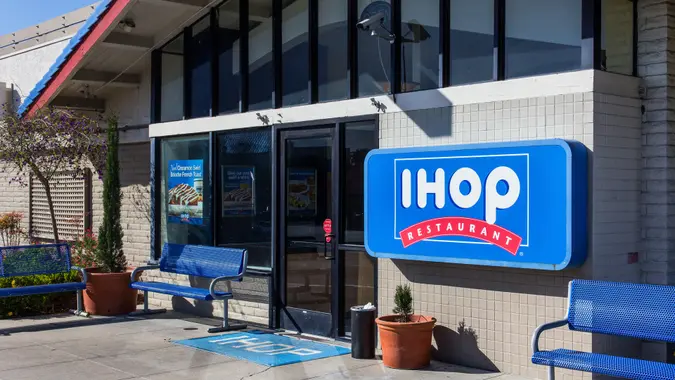Advertiser Disclosure
GOBankingRates works with many financial advertisers to showcase their products and services to our audiences. These brands compensate us to advertise their products in ads across our site. This compensation may impact how and where products appear on this site. We are not a comparison-tool and these offers do not represent all available deposit, investment, loan or credit products.
How Much the 10 Most Common Car Repairs Cost — and How To Afford Them
 Written by
Andrew Lisa
Written by
Andrew Lisa
 Edited by
Daria Uhlig
Edited by
Daria Uhlig

Commitment to Our Readers
GOBankingRates' editorial team is committed to bringing you unbiased reviews and information. We use data-driven methodologies to evaluate financial products and services - our reviews and ratings are not influenced by advertisers. You can read more about our editorial guidelines and our products and services review methodology.

20 YearsHelping You Live Richer

Reviewed by Experts

Trusted by Millions of Readers
If you own a car, maintenance and repairs are an inevitable — and potentially expensive — part of life.
Here’s a look at 10 common repairs, which were outlined in a past report by automotive market research company IMR Inc. You’ll also learn what they cost, on average, and pick up some tips and tricks to help you pay for those repairs when they arrive, which they eventually will.
Oil/Filter Change
- Cost of oil change: $85-$130
- Cost of oil filter replacement: $5-$15
According to Kelley Blue Book, an oil change includes replacing both the oil and the oil filter in your vehicle’s crankcase.
Wiper Blade Replacement
- Cost of wiper blade replacement: $43-$59
Windshield wipers themselves cost between $39-$47, according to Kelley Blue Book, while labor costs range from $10-$12. This, however, is a DIYable repair for most. You’ll know it’s time for new blades if they’re not moving smoothly, make a chirping or chattering sound, the rubber edge looks torn or worn or, most importantly, leave streaks and don’t clear the windshield of water.
Air Filter Replacement
- Cost of air filter replacement: $64-$78
According to Kelley Blue Book, air filters cost $25-$30 and labor costs account for the rest. The good news is this task, which should be performed annually or whenever the filter is clogged or dirty, is any easy DIY. Just open the hood, locate and open the air filter’s housing, pop out the old one, insert the new one and replace the housing cover. This will help both your car and your bank account breathe a little easier.
Scheduled Maintenance
- Cost of scheduled maintenance at 50,000 miles: $67-$96
- Cost of scheduled maintenance at 100,000 miles: $219-$271
You should be able to keep the cost of scheduled maintenance at 50,000 miles inside $100, according to Kelley Blue Book, but that figure can grow with each next scheduled maintenance visit as problems tend to become more severe and numerous with time. Also, this is a time to be vigilant. According to Edmunds, it’s not uncommon for so-called dealer-recommended services to cost $100 or more than the maintenance stated in your car’s manual.
New Tires
- Cost of new tires: $75-$500 each
It’s possible to get low-end tires on the cheap for as little as $75, but standard, moderately priced all-weathers will generally run you $100-$300. High-end, ultra-performance or specialty off-road tires, however, can cost as much as $300 or more — for each tire. The good news is you can often buy them two at a time and rotate the older tires — partially worn but still driveable — to the front. New tires should go on the back.
Battery Replacement
- Cost of battery replacement: $286-$335
The average battery costs $172 to $202, according to Kelley Blue Book, with the cost of labor accounting for the rest. There are no specific mileage recommendations for when a battery needs to be replaced, but they do eventually die. You’ll know it when it comes — you turn the key and nothing happens. Before that, however, your battery warning light should come on.
Brake Work
- Cost of brake pad replacement: $252-$370
- Cost of brake rotor replacement: $417-$554
Necessary brake work is a repair you can’t afford to skip for obvious reasons. It also happens to be one of the most complex and potentially expensive repairs. What you’ll pay has a lot to do with what you drive. Bigger, heavier vehicles that are harder to stop — not to mention, of course, luxury and European vehicles — tend to cost much more in terms of brake repair than smaller domestic cars or common imports.
Flush Coolant
- Cost to flush coolant: $241 to $295
If you simply need to top off your car’s coolant, you can do it yourself without ever visiting a mechanic — you can score a jug at any gas station or auto parts store. If you need to flush your radiator, however, that’s usually a job for the pros. According to Kelley Blue Book, the average cost for a coolant flush is $241-$295.
Engine Tune-Up
- Cost of engine tune-up: $40 to over $1,000
According to AutoZone, the cost of a basic engine tune-up can vary a lot depending on the type of car and the cost of any associated parts. There are many services associated with a tune-up, and a good mechanic will help you decide which ones take priority and which ones you can put off according to your budget. Doing nothing, however, is not an option — tune-ups are among the best ways to prevent bigger, more expensive repairs down the line.
Wheel Alignment/Balancing
- Cost of wheel alignment: $139-$197
- Cost of wheel rotation/balancing: $138-$218
Although it’s usually safe to drive with poorly aligned or unbalanced wheels without affecting other mechanical components and systems, it will eventually lead to premature tire wear — plus it’s super annoying. According to RepairPal, however, alignment work is usually done as part of larger and costlier repairs.
Ways To Afford These Repairs
If you drive a car long enough, repairs are inevitable, and even for cars in their prime, maintenance is part of the deal — and all of it will cost you. Here are a few ideas about how to pay for unexpected repairs that sneak up on you, and how to prevent that from happening in the first place.
Open a Dedicated Savings Account
Many experts agree that the best way to avoid being blindsided by costly repairs is to prepare for the inevitable by opening a savings account dedicated to paying for them. Open an online savings account, link it to your checking account and set up a small automatic monthly transfer that you can afford — every little bit helps. This will allow you to establish a cash cushion without putting a financial squeeze on your day-to-day life.
Know What’s Coming
When you set up your savings account, the first question will likely be about how much you should transfer every month to prepare for the expenses of maintenance and repairs. According to Kelley Blue Book, the average auto repair costs nearly $550, and you might have more than one repair per year.
Consider a Personal Loan
If you haven’t been proactive in saving for repairs or find yourself confronted with several costly repairs happening all at once, you might need to come up with a sizeable amount of cash that is beyond your immediate means. Consider a personal loan, which often comes with lower rates than credit cards and flexible repayment terms.
Consider an Extended Warranty
Extended warranties are not for everyone, and they can come with high deductibles and monthly payments that might be better deposited into a savings account dedicated to car repairs. These vehicle service contracts, however, can in some cases and for some drivers be a good way to pay for repairs — especially big, expensive repairs — when your car outlives its dealership and/or manufacturer warranty.
Dedicate a Credit Card to Repairs
Another strategy is to apply for a credit card and leave it open — don’t use it for anything else — for the car repairs that are always just around the corner. It’s a convenient strategy, but not one that is without drawbacks. Credit card expenditures saddle you with high-interest revolving debt that can take years to pay off and negatively affects your credit score.
Open a Repair Shop Credit Card
Some national auto repair companies have their own credit cards that come with special offers and deals for when you use those credit cards to pay for your repairs. NAPA Auto Care Center, for example, has a card that offers special financing for six or 12 months depending on the size of the repair bill.
Ask About a Payment Plan
Many mechanics offer no-interest financing programs that allow you to pay for your repairs in monthly installments that you can afford. Not all, but many neighborhood shops offer these services, as do some dealerships. Just ask. If not, shop around until you find someone who does or consider another payment option.
P2P Lending
Unlike personal loans, peer-to-peer lending sites like LendingClub pair potential borrowers with investors who issue loans with interest rates based on creditworthiness. It might be easier and — depending on the risk factor your credit presents — a cheaper way to finance car repairs than credit cards.
Use an App To Sell Your Stuff
If you’re considering an in-home purge of clothes, furniture, toys, electronics or any other physical merchandise, donating is an easy and well-intentioned way to declutter. You can also, however, transform your stuff into cash just as easily — easier, in some cases — by using an app like OfferUp. All you do is list your unwanted things to buyers in your area who are using the same app, receive messages, strike a deal and wait for them to come by to pick it up.
Make a Hobby Pay
From woodworking and mosaics to mailboxes and garden gnomes, if you’ve got a talent for making physical things, you can use a site like Etsy to list them for sale for buyers online. Literally millions of people make extra cash — or in some cases, a full-time living — by selling custom, vintage and handcrafted works of all kinds online. If you already have a job, you can dedicate 100% — or however much you like — of your profits to your savings account you opened for funding your repairs.
Sell a Service
If you don’t have a skill that lends itself to making physical, tangible goods, it’s likely that you have a service you can sell. From tutoring and bookkeeping to writing and data entry, you can sell your services on a freelance basis on sites like Fiverr. Here, too, you could take the gravy you earn and deposit it right into your dedicated car repair savings account.
Ask For Help
If you’re really in a jam, there are many organizations that offer need-based assistance with paying for car repairs. Some are faith-based groups, others are secular nonprofits, some are regional, some are national, but all exist to help get you driving again. Just Google something like “help with paying for auto repairs” with your ZIP code.
Buy a Car With Ownership Costs in Mind
The ultimate measure in being proactive is to buy a car with reliability at the forefront of your mind. Every year, Kelley Blue Book names the vehicles in every segment and category that offer the lowest long-term ownership costs. If you buy one of the cars on this list — or the many other lists like it from other credible sources — you’ll start off with a car, truck or SUV that has proven to break down less frequently and cost their owners less in service and maintenance expenses over time.
Consider Selling and Starting Over
At some point for every car owner, it simply stops making sense to put any more money into a persistently problematic car. Major repairs like blown engines or failed transmissions can easily cost as much as a down payment on a new car. If your car is already old with lots of mileage, even a more modest repair might put you in a financial position where it makes more sense to trade up than to fix up.
More From GOBankingRates
- Nearly 1 in 3 Americans Hit by a Costly Holiday Scam, Norton Survey Shows -- How To Avoid This
- Here's What the Average Social Security Payment Will Be in Winter 2025
- How Middle-Class Earners Are Quietly Becoming Millionaires -- and How You Can, Too
- The Easiest Way to Score $250 for Things You Already Do
Share This Article:




Best Ways To Save Your Money
Make your money work for you
Get the latest news on investing, money, and more with our free newsletter.
By subscribing, you agree to our Terms of Use and Privacy Policy. Unsubscribe at any time.


Thanks!
You're now subscribed to our newsletter.
Check your inbox for more details.



Sending you timely financial stories that you can bank on.
Sign up for our daily newsletter for the latest financial news and trending topics.
For our full Privacy Policy, click here.
Looks like you're using an adblocker
Please disable your adblocker to enjoy the optimal web experience and access the quality content you appreciate from GOBankingRates.
- AdBlock / uBlock / Brave
- Click the ad blocker extension icon to the right of the address bar
- Disable on this site
- Refresh the page
- Firefox / Edge / DuckDuckGo
- Click on the icon to the left of the address bar
- Disable Tracking Protection
- Refresh the page
- Ghostery
- Click the blue ghost icon to the right of the address bar
- Disable Ad-Blocking, Anti-Tracking, and Never-Consent
- Refresh the page


















